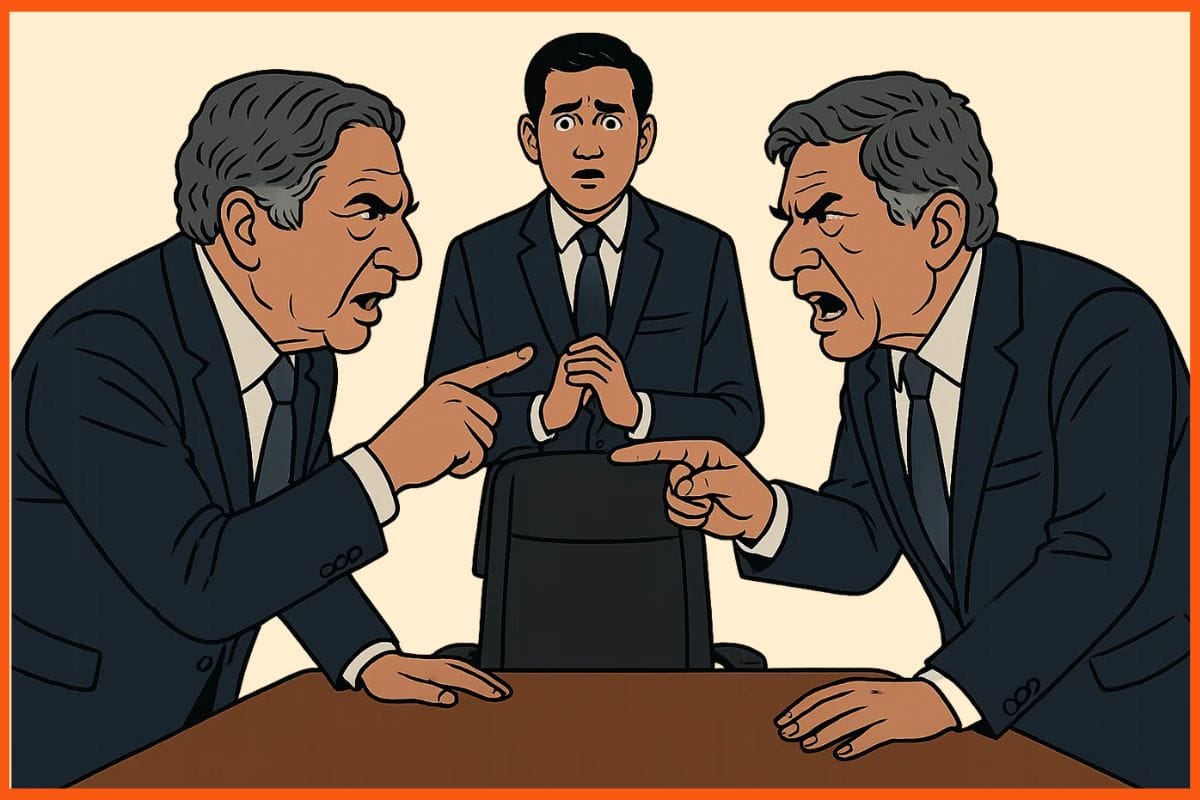Tata Trusts have made an unprecedented exception to the group’s standard retirement age, granting Natarajan (N.) Chandrasekaran for a third term as chairman of Tata Sons. Ordinarily, executives must retire at 65, but the Trusts’ decision allows Chandrasekaran to continue until 2032, a rare move in the history of the Tata group.
Exception to the 65-Year Rule: What Changed
Chandrasekaran’s current term was set to end in February 2027, as he approaches the age threshold of 65. But the Trusts approved a resolution that waives this age barrier for his third term, making him the first Tata executive permitted to serve beyond the usual limit.
Though the decision is symbolic in many ways, it also has a legal and governance effect. It gives the Tata Sons board the formal authority to consider and ratify the extension once the current term ends.
The move marks a significant departure from long-standing Tata norms, where strict retirement rules have guided leadership transitions across companies in the group.
Why the Trusts Chose to Bend the Rule
1. Continuity through strategic transformations
Tata is planning and investing hugely in sectors such as semiconductors, electric vehicles (EVs), EV battery manufacturing, and the turnaround of Air India. These are capital-intensive, long gestation industries that benefit from steady leadership over many years. The Trusts believe that extending Chandrasekaran’s term will help the group execute these complex plans without leadership disruption.
2. Avoiding instability during critical periods
The timing of this extension is notable: Tata has several major projects, deals, and restructuring efforts in motion. A change in leadership in the middle of such phases could introduce uncertainty. The exception is meant to maintain stability while these programmes mature.
3. Confidence in his leadership record
Since becoming chairman in 2017, Chandrasekaran has guided Tata through challenging times, including global market shifts, internal reorganisations, and acquisitions. His track record has evidently convinced the Trusts that he is well placed to oversee the next phase of transformation.
Reactions, Challenges & What to Watch
Market and public reaction
The decision has drawn mixed responses:
- Supporters argue that continuity makes sense during this transformational period and that changing leadership could slow down or jeopardise critical initiatives.
- Critics raise concerns about governance: bending a fixed rule may set a precedent, and some worry it clouds clarity about how future leadership decisions will be handled.
Governance and legal implications
While the Trusts’ resolution clears the path for an extended term, formal steps remain:
- The Tata Sons board must formally ratify the extension when the time comes.
- Observers will closely watch any future leadership choices to see whether similar exceptions become normalised.
Given Tata’s deep footprint in the Indian industry and public importance, any changes in its leadership model attract attention from regulators, stakeholders, and the government. Some reports suggest government officials have signalled to Tata leaders that maintaining stability is crucial, hinting at the broader implications of governance in large groups.
What This Means for Tata’s Future
Tata Sons plays a major role in India’s economy, so any leadership change naturally gets a lot of attention. Reports suggest that even government officials have supported the idea of keeping things stable at the top, given how important the group is to several key industries.
By extending Chandrasekaran’s term, the Tata Trusts have shown strong faith in his leadership. This move gives the group steady direction as it invests in new areas like semiconductors, electric vehicles, and aviation. It also avoids confusion or delays that could come with a leadership change.
However, the decision will be watched closely. It breaks a long-standing rule, and people will want to see if similar exceptions are made in the future. For now, it means Tata will continue under a trusted leader while it works on some of its biggest projects yet.


Leave a Reply